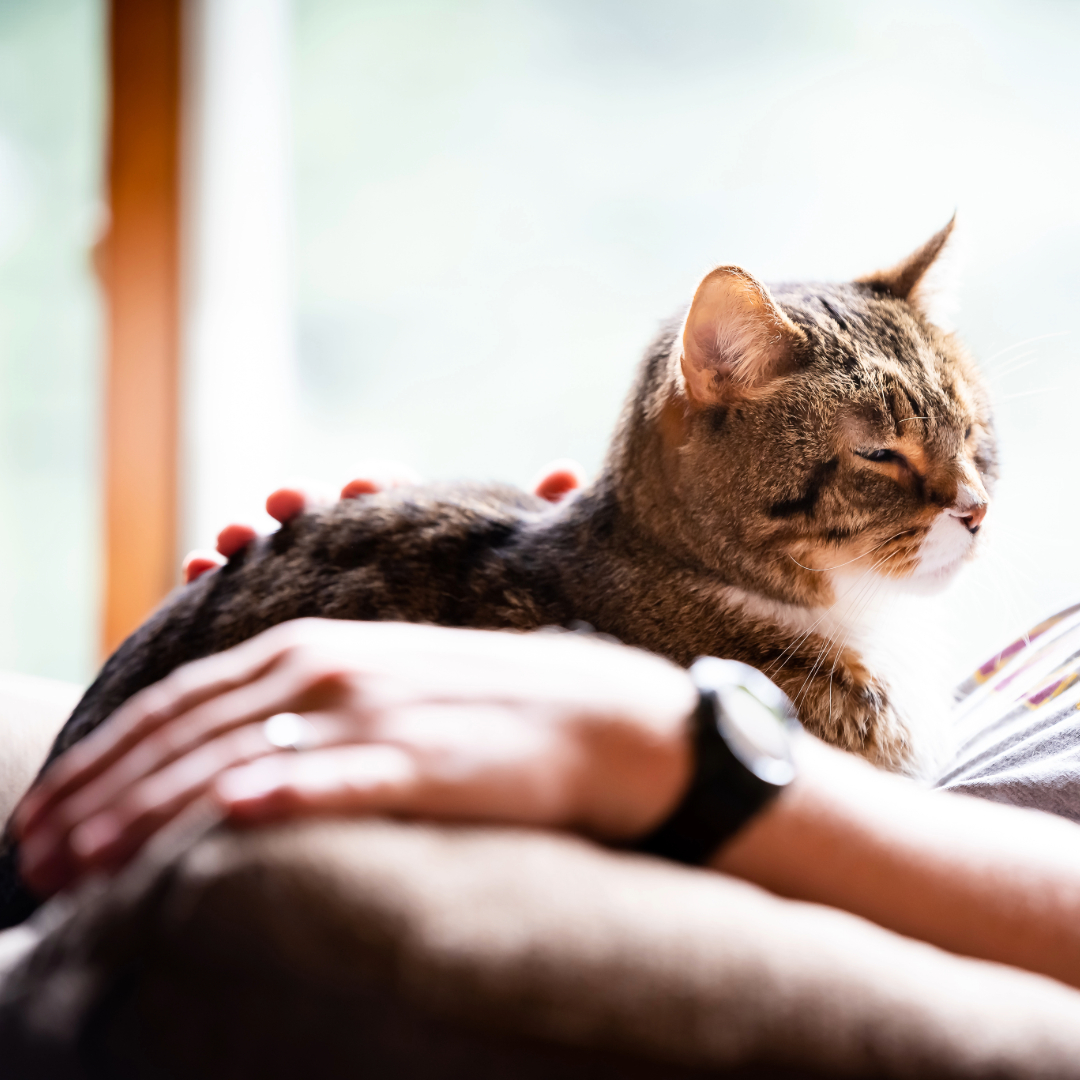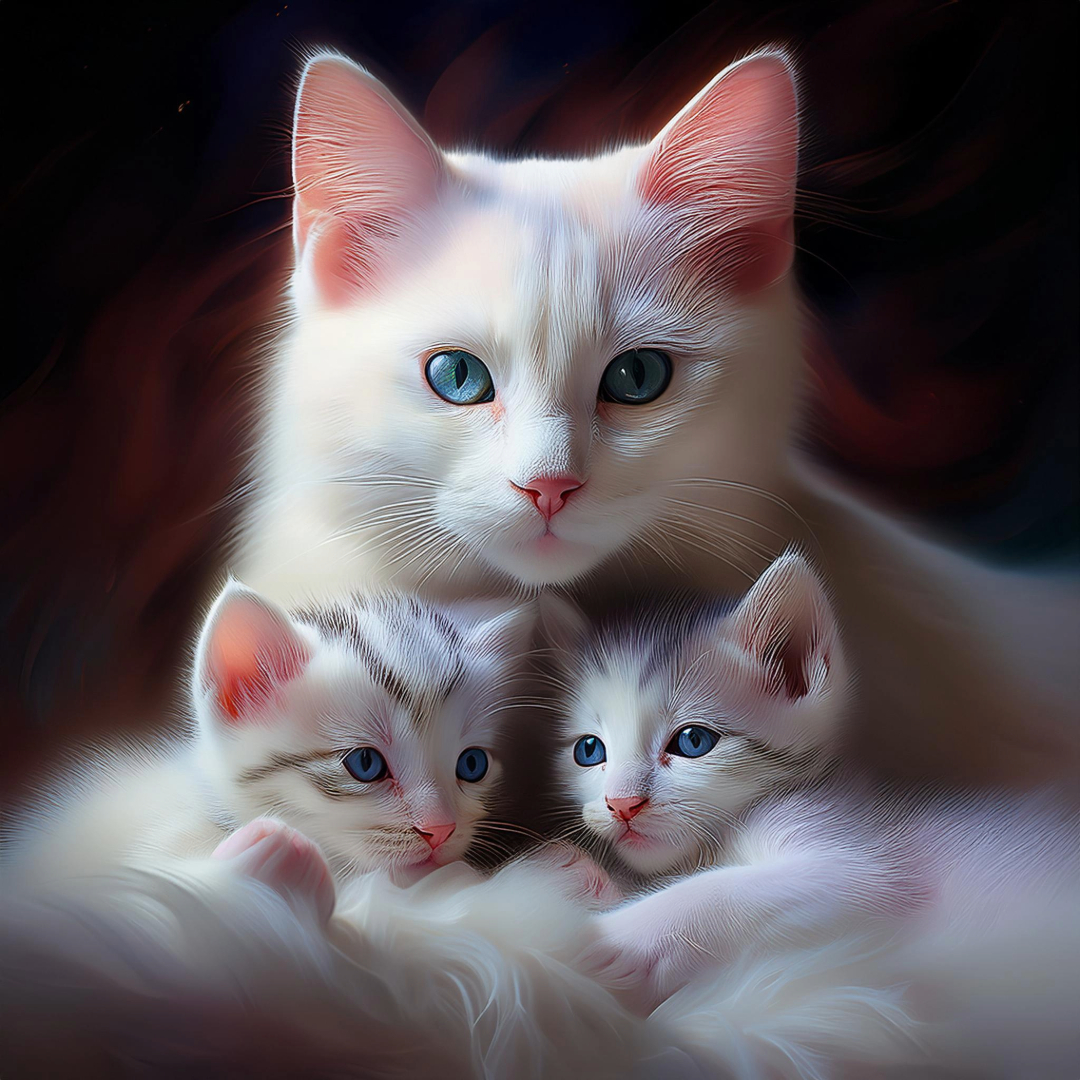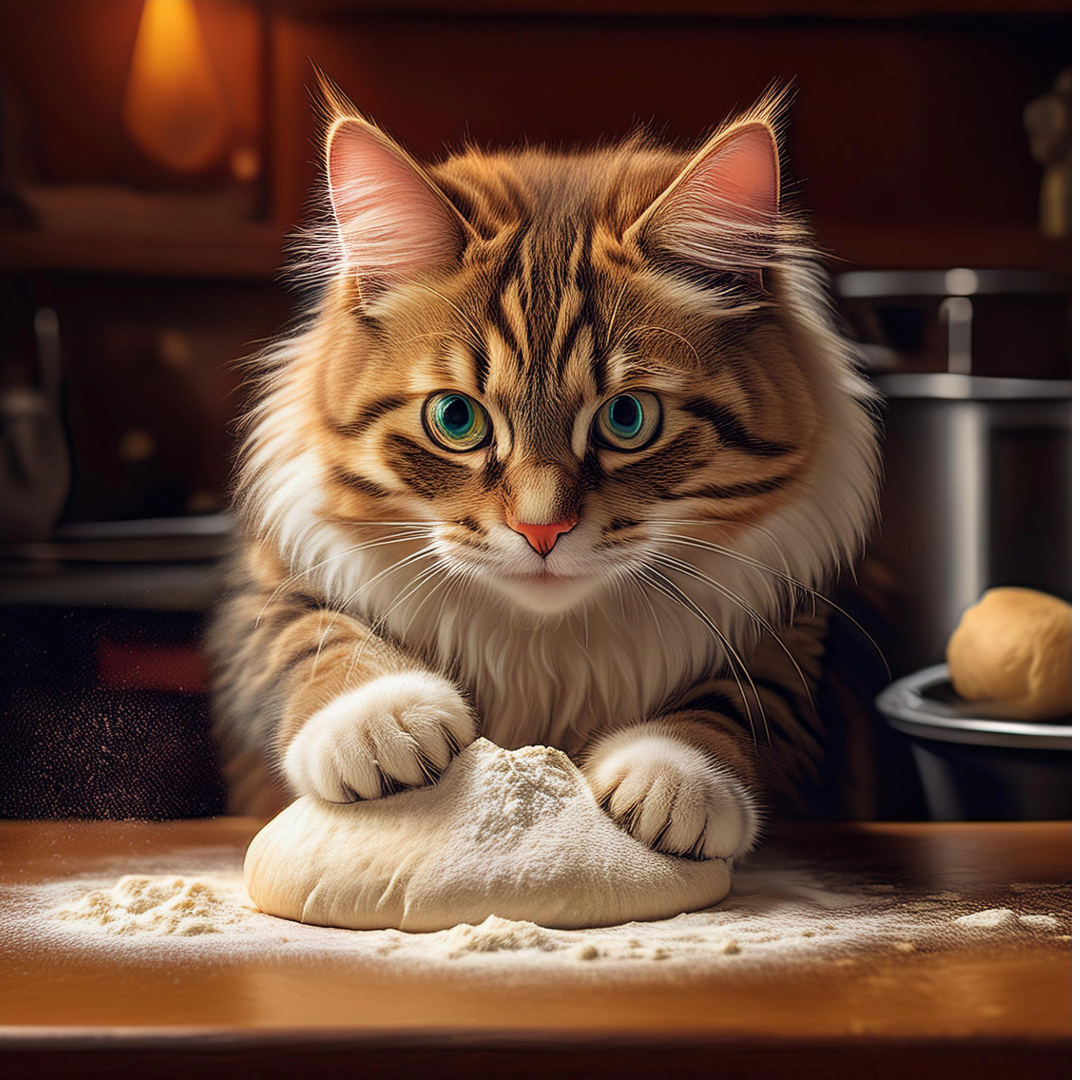“Why Do Cats Knead?” is a common question asked by cat parents and children that grow up with cats. If you’re a cat parent, you’ve probably seen your feline friend rhythmically pressing their paws into a soft surface like a cozy blanket, your lap, or even a pillow. This behavior, known as “kneading” (or, more playfully, “making biscuits”), is common among domestic cats, and it comes with a variety of affectionate terms and fascinating reasons. Let’s explore why cats knead and the meanings behind this instinctual action.
If you’re lucky enough to have a cozy feline curled up on your lap, you’re probably familiar with the comforting—and curious—ritual of ‘kneading.’ It’s almost as if your cat is training to be a little baker, rhythmically pressing her paws into your lap like she’s kneading dough. While the thought of her making bread is cute, you hope your kitty does not use their claws when the Knead.
So, if your cat is not secretly baking, what’s behind this instinct to knead? You’re not alone in wondering. In fact, animal behavior experts have pondered this same question and developed a few fascinating theories.
Why do Cats Knead?: Reasons and Theories Explained
1. A TOUCH OF LOVE: An Expression of Affection
Think about when your cat is most likely to knead. You’re probably petting her. She’s likely purring. Loudly. She might even drool a bit (although she’d never admit to it). Obviously she’s very content, and feeling the love. So kneading might be her way of helping you feel it too. Many cat parents observe that their cats tend to knead when they’re feeling especially affectionate. Cats often knead when they’re sitting on their owner’s lap, accompanied by purring and a relaxed demeanor. This could be a way of showing trust and love. Since kneading may be tied to feelings of security, cats who knead on their human companions are likely expressing contentment and a sense of closeness.

Unfortunately, that feeling might be more painful than pleasant for you… especially if she’s REALLY happy. Because the better she feels, the harder she’s likely to knead – and if her nails are long, you’ll know it. To avoid that feeling, cover your lap with a blanket or pillow before she perches.
2. MAKING THE BED: Nesting Instincts from Ancestry
Another kneading theory traces its roots to our domestic cats’ wild ancestors, who would knead grass to create a soft sleeping spot – sort of like the circling dogs do before they settle in. So if your cat is kneading your lap, sit back and relax… because that’s likely what she’s preparing to do. In the wild, cats’ ancestors would knead grass, leaves, or other soft materials to create a makeshift nest for sleeping or giving birth. This instinct may have carried over into domestic cats, even if they no longer have to worry about building a safe, comfortable spot. This theory suggests that cats might knead before lying down, particularly on soft surfaces, as a leftover instinctual habit.
3. KITTEN MEMORIES: A Comforting Behavior Rooted in Kittenhood
A third theory looks to more recent history, specifically, your cat’s infancy. Cats actually start to knead instinctually as kittens, when they are nursing, to help stimulate their mothers’ milk. While your cat might be past nursing age, she might still enjoy that comforting, “food-is-love” feeling she associates with kneading. This has become one of the most widely accepted explanations that kneading is a behavior retained from kittenhood. Kittens knead their mother’s belly to stimulate milk production, which is essential for their early development. As a result, this action may become associated with feelings of security and contentment. Even in adulthood, many cats will knead when they feel safe, relaxed, or happy, which is why you often see this behavior when they’re lounging with their favorite humans or curled up in a cozy spot.

4. THIS ONE’S MINE: Marking Territory with Scent Glands
Kneading might also be your cat’s way of actually “claiming” you. In other words, you’re not just being kneaded; you’re being marked – by the scent glands on the soft pads on the bottoms of their paws. Think of it as her way of showing she cares… enough to tell the rest of the feline world to keep their paws off you. Cats have scent glands in their paw pads, so when they knead, they’re subtly marking their territory. By pressing their paws into an object or surface, they leave behind their unique scent as a way of claiming it. This territorial marking behavior can explain why some cats will knead repeatedly on their favorite bed, blanket, or human companion. It’s their way of saying, “This human is mine!”.

5. STAYING LOOSE: Stretching and Flexing Muscles
Finally, a kneading cat might just be a stretching cat. With so much power napping filling her day, your cat needs to take a break now and then to stay limber… at least until her next scheduled snooze. Kneading may also serve as a way for cats to stretch and flex the muscles in their paws and legs. The repetitive motion helps keep their muscles supple and ready for action. Much like humans might stretch upon waking or after sitting in one position for a long time, cats may knead to loosen up and stay limber, particularly after a nap or period of rest.
At the end of the day, an explanation for why cats knead may not be as straightforward as you’d expect. Then again, these are the kinds of mysteries that hopefully make you love your cat even more. Sometimes the best things are hard to explain. And when the truth is found to be lies, and all the joy within you dies, don’t you want somebody to love? Don’t you need somebody to love? Wouldn’t you love somebody to knead? You better find somebody to knead. And “Why Do Cats Knead” is a question that will continue to have many theories to explain this entertaining cat behavior.
Terms Cat Owners Use to Describe Kneading
Cat owners have developed quite a few endearing nicknames for this behavior:
- Making biscuits – Because the motion resembles the way a baker kneads dough.
- Making muffins – Similar to “making biscuits,” with a culinary twist.
- Making happy feet – A name highlighting the joy and satisfaction cats often display while kneading.
- Kitty massage – Some people feel as though their cats are massaging them when they knead on their laps.
- Milk-treading or milk-pawing – A term referencing one theory of why cats knead (related to nursing, as discussed below).

Should You Let Your Cat Knead?
Most cat owners allow their cats to knead, understanding that it’s a natural behavior and can help a cat feel secure. However, if a cat is kneading on your lap with sharp claws, it can get uncomfortable! In these cases, gently placing a thick blanket over your legs can provide a layer of protection, or you can trim your cat’s claws regularly to minimize any discomfort.
Final Thoughts on Kneading
Kneading is a behavior with roots in kittenhood, serving as a complex mix of instinct, affection, and even territorial marking. By understanding the reasons behind it, you can appreciate this endearing habit and find ways to keep your cat happy and comfortable while they “make biscuits.” So, the next time your feline friend starts kneading on you, know that it’s a gesture of trust, love, and satisfaction—something all cat owners can appreciate.
We hope you enjoyed these reasons answering Why Do Cats Knead? Remember to “share” this article with other Cat fans!

